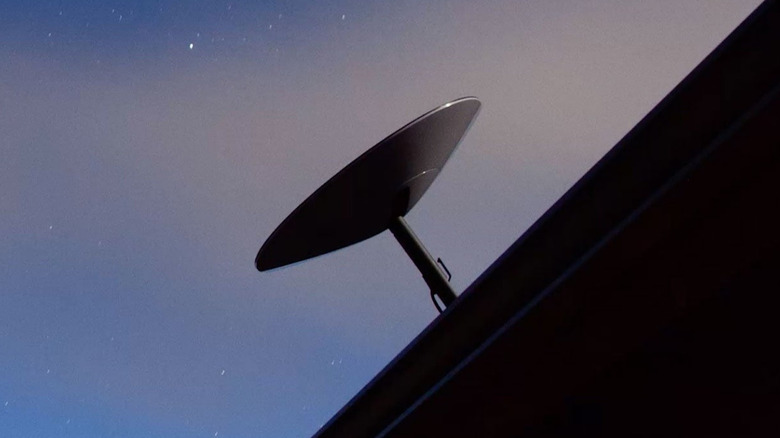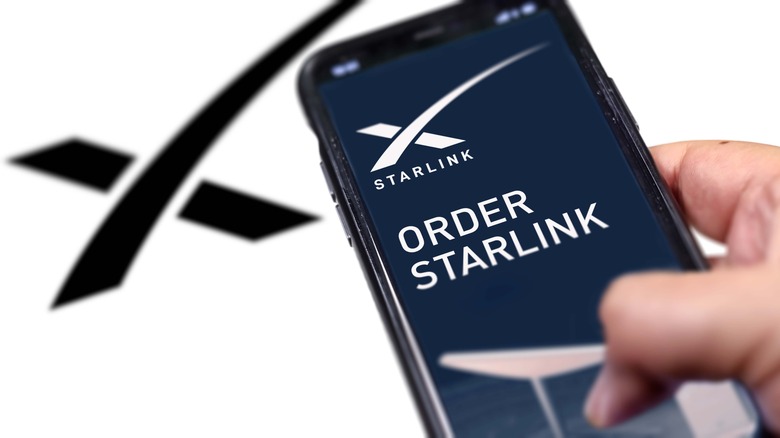SpaceX's Starlink Internet Just Got Some Serious Bragging Rights
SpaceX's Starlink provides an alternative to broadband to users all over the world, but satellite internet is not known for its fast speeds. Elon Musk's Starlink is marketed as an option for those living in rural areas with no other form of internet access — and it's true that in such places, Starlink makes for a great solution. But is it really that slow compared to other options, and how does it perform in various parts of the world? New analysis proves that Starlink may actually perform better than expected. The information comes from Ookla, a company known for its Speedtest.net service that lets users check their connection speeds from anywhere in the world. Ookla published a lengthy analysis of Starlink and its competitors, highlighting the performance of the SpaceX satellite dish in comparison to its competitors. The analysis includes not just speeds and coverage across the United States, but also in other countries all over the globe.
In its report, Ookla details the progress Starlink made over the last two quarters of 2021, with comparisons to HughesNet and Viasat, its two largest competitors in the United States.
Starlink speeds continue rising
Based on Ookla's analysis, Starlink has left its competitors far behind when it comes to download speeds. The median speed increased from 87.25Mbps to 104.97Mbps quarter-to-quarter, whereas the average speeds achieved by HughesNet and Viasat oscillate around 20Mbps. This is a massive gap that certainly can be felt when using the internet, and also, a huge increase to achieve over just one quarter. The median download speed for all fixed broadband across the United States is still higher than Starlink, but only by a small margin, at 131.30Mbps. Starlink performs a little worse where upload speeds are concerned, and actually saw a drop in speed over the last two quarters, going down from 13.54Mbps to 12.04Mbps. In this regard, all fixed broadband metrics are still higher at 19.49Mbps. On the other hand, Starlink still vastly outperforms its satellite competitors who are trailing behind at 2.88Mbps and 2.54Mbps.
Starlink's performance was not consistent across every region in the U.S. and varied on a county-to-county basis. Citizens of Miami Dade County in Florida had the best luck with Starlink, hitting high download speeds of 191.08Mbps, while Columbia County in Oregon was served with just 64.95Mbps, though such a speed is generally considered acceptable, especially in remote areas. Starlink saw similar success across the world, outperforming its competitors in Australia, Austria, Belgium, Brazil, Germany, Ireland, Italy, Mexico, New Zealand, Poland, and Portugal. In some of these countries, Starlink's success applies not just to satellite internet, but also all fixed broadband options, meaning that it offers dominating speeds across the board.
It's not perfect, but it's still good
Starlink's range of coverage makes it stand out, and that remains true even with the new analysis that proves it can also keep up when it comes to speed, but it's not without its issues. For one, Starlink is not cheap; the company recently introduced Starlink Premium as an alternative for more demanding users that want higher connection speeds ranging from 150Mbps to 500Mbps, and that service costs a whopping $500 a month. The standard Starlink connection costs $100 a month, but the speeds are much lower, starting at 50Mbps and going up to a maximum of 250Mbps.
Another issue, albeit one that may not directly affect users, is that Starlink satellites are susceptible to damage. Dozens of Starlink satellites were destroyed in a geomagnetic storm in February 2022. It's a major financial loss for the company, but of course, it charges a premium for its service that probably accounts for the possibility of satellite loss. Although Starlink is not perfect, it's certainly making its way up the ladder and seems to offer competitive internet service to those who are willing to pay the price of it. It may never dethrone broadband in urban areas, but for those who live far away from large cities, it's certainly becoming a more and more agreeable alternative.


